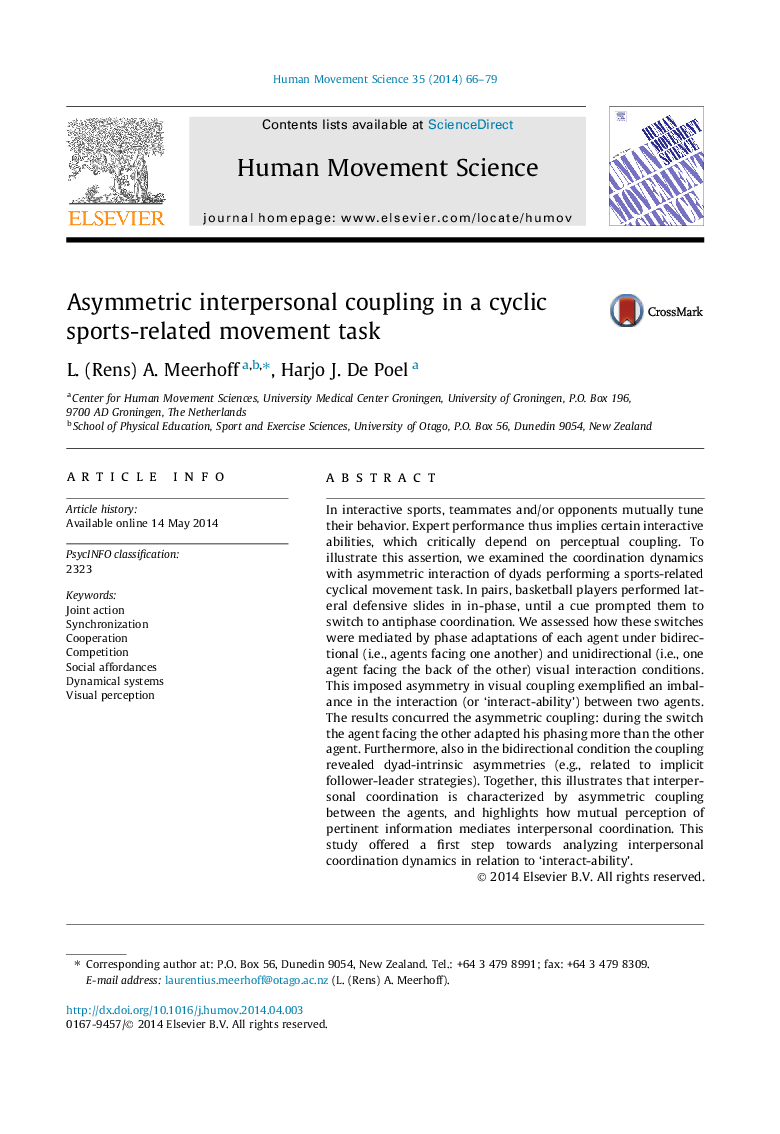| Article ID | Journal | Published Year | Pages | File Type |
|---|---|---|---|---|
| 928309 | Human Movement Science | 2014 | 14 Pages |
•We exemplified an asymmetry in visual interaction between two agents as a parallel for an asymmetry in interactive skills.•Each individual agent’s contribution to the dyadic behavior was assessed.•Results confirm the asymmetry in coupling as a function of visual information.•In addition, individual strategies influence coupling asymmetry.•Interpersonal coupling is posed to be inherently asymmetric.
In interactive sports, teammates and/or opponents mutually tune their behavior. Expert performance thus implies certain interactive abilities, which critically depend on perceptual coupling. To illustrate this assertion, we examined the coordination dynamics with asymmetric interaction of dyads performing a sports-related cyclical movement task. In pairs, basketball players performed lateral defensive slides in in-phase, until a cue prompted them to switch to antiphase coordination. We assessed how these switches were mediated by phase adaptations of each agent under bidirectional (i.e., agents facing one another) and unidirectional (i.e., one agent facing the back of the other) visual interaction conditions. This imposed asymmetry in visual coupling exemplified an imbalance in the interaction (or ‘interact-ability’) between two agents. The results concurred the asymmetric coupling: during the switch the agent facing the other adapted his phasing more than the other agent. Furthermore, also in the bidirectional condition the coupling revealed dyad-intrinsic asymmetries (e.g., related to implicit follower-leader strategies). Together, this illustrates that interpersonal coordination is characterized by asymmetric coupling between the agents, and highlights how mutual perception of pertinent information mediates interpersonal coordination. This study offered a first step towards analyzing interpersonal coordination dynamics in relation to ‘interact-ability’.
